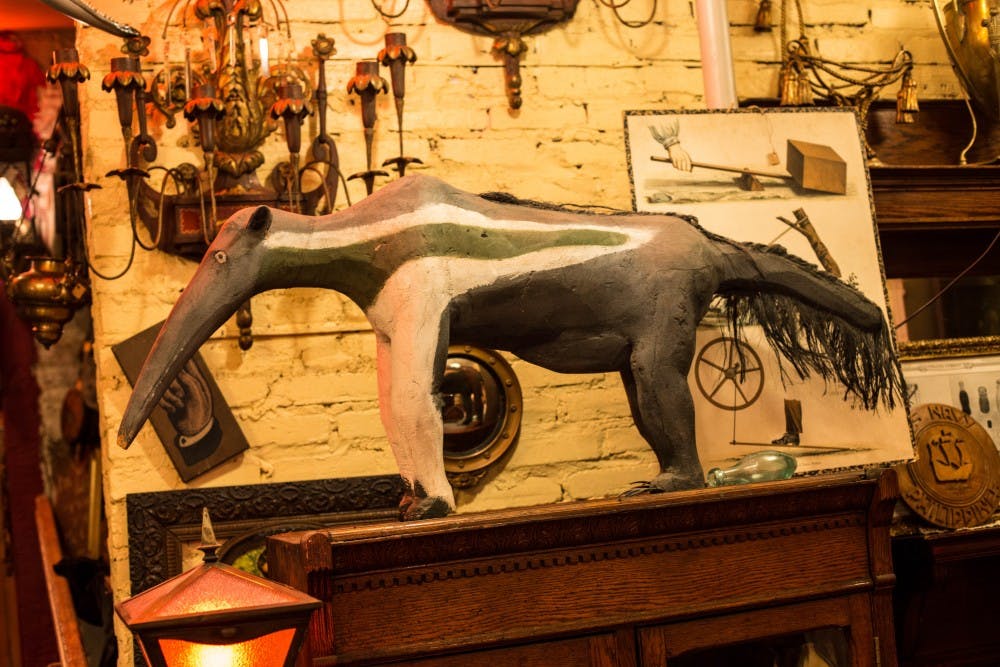Walking down 2nd Street in Old City, you’d almost miss it. The paint on the metal doorframe is chipping, the back side of a window air conditioner juts out of the façade, and the yellow brick building above is dirtied with age. The dim of midday shadows the interior, and apart from a stained–glass panel spelling “Books & Art” and a small neon sign inviting passersby in, there is no sign of activity. Surrounded by well–kept art galleries and posh furniture stores, Jules Goldman Books & Antiques is a façade that many ignore.
Behind the brash ugliness of its storefront lies a treasure trove of books, art, sheet music, vintage photographs, auction catalogs—the list goes on. It was here that I ceremoniously began my own personal art collection with the purchase of an 1893 Harper’s Weekly for $5.
Since then, I’ve accumulated WWI–era cameras, printed advertisements from the 1950’s, French sheet music from La Belle Époque, and catalogs from exhibition openings at the Met. And though each piece in my growing collection is unique, they all share one quality—their price tags never surpassed $100.
I didn’t know much about collecting art at first. Like many, I thought it was a hobby reserved for the wealthy few who could afford pieces from Sotheby’s or Art Basel. I was always the admirer, never the owner. It wasn’t until my ARTH–102 professor Dr. Gwendolyn Dubois Shaw mentioned that her personal collection began with a Harper’s Weekly that I realized art collection can happen at any level.
The key to collecting art as a college student is finding places like Jules', those places with eclectic piles of ephemera from eras gone by. In Philly, you can find those places in Old City. The Book Trader on 2nd Street is a mess of a store with old editions of books in boxes, on shelves, and stacked on the floor. Architectural Antiques Exchange, also on 2nd Street, is a little more structured, the shelves cluttered with old typewriters and ornate picture frames. Anastacia’s Antiques on Bainbridge Street is a mix between the two with pieces large and small, from glass vials to oak armoires.
Collecting art on a budget isn’t easy—these places require you to hunt for it. But in limiting what I spend, I’ve broadened my perspective on what it means to own art. You don’t have to spend hundreds of millions of dollars on a Da Vinci to be able to see the value in collecting smaller pieces of art. For many, the hobby of collecting can be considered one of a hoarder, but for me, collecting art is a way of memorializing even the smallest pieces of art, so long as I find them beautiful.
My favorite piece from my collection is and probably always will be my 1893 Harper’s Weekly. It has one story of a famed veterinarian and another on Queen Victoria. It has intricate sketches, spanning two pages and was clearly printed on a newspaper by well–oiled antique machines. But most important of all, it’s the first piece of art I owned, and serves as a daily reminder to skip a trip to Saxby’s every now and then to pocket the money for another pilgrimage to Old City.

